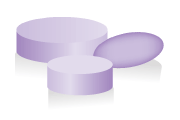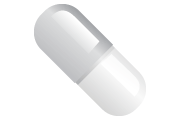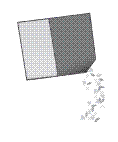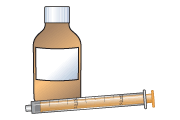Morphine for pain
This leaflet is for parents and carers about how to use this medicine in children. Our information may differ from that provided by the manufacturers, because their information usually relates to adults. Read this leaflet carefully. Keep it somewhere safe so that you can read it again.
Do not give extra doses of Morphine, as this can be dangerous. Do not stop giving Morphine suddenly.
Do not stop giving Morphine suddenly.
When you get a new prescription of liquid medicine, check how much you should give, in case you have been given a different strength.
Name of medicine
Morphine
Common brands: Oramorph, Sevredol, Zomorph
Modified release tablets and capsules: FilnarineSR, MST Continus, MXL
Why is it important for my child to take Morphine?
Morphine will help to control your child’s pain.
This leaflet is about the use of morphine to reduce moderate to severe pain. This might be pain from an injury, after an operation or due to an illness.
What is Morphine available as?
- Tablets: 10 mg, 20 mg, 50 mg (these may contain lactose)
- Liquid medicine: 10 or 20 mg in 5 mL (this contains a small amount of sugar and ethanol (alcohol)
- Suppositories: 5 mg, 10 mg, 15 mg, 20 mg, 30 mg
- Modified-release granules: 20 mg, 30 mg, 60 mg, 100 mg or 200 mg (per sachet)
- Modified-release tablets and capsules are available in a range of doses from 5 to 200 mg
When should I give Morphine
- If your child has pain that comes and goes, give them a dose of morphine when they first complain of pain.
- You should give morphine regularly to keep your child’s pain under control. This is every 12 hours for modified-release morphine or every 4 hours for other forms of morphine.
- The packaging will tell you which type of morphine you have and how often you can give it. If you are not sure, check with your doctor or pharmacist first.
- Write down the time that you give each dose, to help you remember.
How much should I give?
Your doctor will work out the amount of Morphine (the dose) that is right for your child. The dose will be shown on the medicine label.
It is important that you follow your doctor’s instructions about how much to give.
How should I give Morphine?

Tablets
- Tablets should be swallowed with a glass of water, squash or juice. Your child should not chew the tablet.

Capsules
- Capsules should be swallowed with a glass of water, squash or juice. Your child should not chew the capsule.
- You can open some brands of capsule and mix the contents with a small amount of soft food such as yogurt, jam or mashed potato. Check the instructions on the packaging. Make sure your child swallows it straight away, without chewing.

Granules
- Sprinkle or stir the granules into a small amount of soft food (e.g. yogurt) or a small drink. Your child should then swallow the food or drink straight away, without chewing. Make sure that they take it all.

Liquid medicine
- Shake the medicine well.
- Measure out the right amount using an oral syringe or a medicine spoon. You can get these from your pharmacist. Do not use a kitchen teaspoon as it will not give the right amount.
Suppositories
Suppositories are inserted into the rectum (the back passage). Full instructions can be found on our website here.
Suppositories must not be taken by mouth.
When should the medicine start working?
- Your child should start to feel less pain within an hour of taking the first dose of morphine.
- It will take up to 12 hours for the first dose of a modified-release preparation to work properly. Your child will be given other pain relief for this time.
- After this, giving morphine regularly should keep your child’s pain under control. If it doesn’t, contact your doctor or pharmacist. Do not give extra doses of morphine.
What if my child is sick (vomits)?
Children are often sick or feel sick for the first few days of taking morphine. Your doctor may prescribe another medicine to help with this.
Tablets, capsules, granules or liquid medicine
- If your child is sick less than 30 minutes after having a dose of morphine, give them the same dose again.
- If your child is sick more than 30 minutes after taking a dose, you do not need to give another dose. Wait until the next normal dose.
Suppositories
- You do not need to worry if your child is sick, as the medicine will still work.
What if I forget to give it?
- Don’t worry if you forget a dose, as morphine stays in the body for a while and will continue to work.
- Give the missed dose when you remember. After that, give the next dose after the usual number of hours (12 hours for modified-release tablets/capsules and granules; 4 hours for other forms).
Never give a double dose of Morphine.
Are there any possible side effects?
We use medicines to make our children better, but sometimes they have other effects that we don’t want (side effects).
Side effects you must do something about
If your child has difficulty breathing, stops breathing, or seems very sleepy, phone for an ambulance straight away.
Other side-effects you need to know about
Your child is likely to feel sick or be sick (vomit) for the first few days of taking Morphine. Your doctor may prescribe another medicine to help with this.
Most children get constipation (have difficulty doing a poo) when taking Morphine. You can help by encouraging them to drink plenty of fluid. Your doctor will probably suggest that your child also takes laxatives – medicines that will help them go to the toilet. It is important that your child doesn’t strain on the toilet.
Your child may get headaches, have a dry mouth or sweat, and their skin may flush (go red). They may have changes in mood and sleep disturbances. They may feel dizzy, and they may feel light-headed when they stand up.
Your child may find it difficult to pass urine (do a wee). Contact your doctor if this happens.
Children taking high doses of Morphine may develop shaking or cramps in the large muscles of the body (myoclonus). Contact your doctor if this happens.
Can other medicines be given at the same time as Morphine?
- You can give your child medicines that contain paracetamol or ibuprofen, unless your doctor has told you not to.
Check with your doctor or pharmacist before giving any other medicines to your child. This includes herbal and complementary medicines.
Some painkillers and cough medicines contain codeine or dihydrocodeine (you can find this information on the label). Do not give these to your child.
The Morphine should not be taken with some common drugs that you get on prescription. It is important to tell your doctor and pharmacist that your child is taking Morphine.
Is there anything else I need to know about this medicine?
Do not stop giving Morphine suddenly, as your child may get withdrawal symptoms and their pain may come back. As your child’s pain improves, or if they need to stop taking Morphine, your doctor will reduce the dose bit at a time.
You may have heard that some people become addicted to Morphine or dependent on it. This is unlikely to happen when Morphine is given to children in pain.
- Morphine is often given to children and adults with life threatening or terminal illnesses. Morphine does not shorten the person’s life.
- An antidote can be given to someone who has had too much morphine. This has to be done in hospital.
General advice about medicines
- If you are not sure a medicine is working, contact your doctor but continue to give the medicine as usual in the meantime. Do not give extra doses, as you may do harm.
- Write down the times that you give Morphine, to help you remember, and to make sure that you don’t give too much.
- Make sure that you always have enough medicine. Order a new prescription at least 2 weeks before you will run out.
- Make sure that the medicines you have at home have not reached the ‘use by’ date on the packaging. Give old medicines to your pharmacist to dispose of.
If you think someone else may have taken the medicine by accident, contact your doctor straight away.
Where should I keep this medicine?
- Keep the medicine in a cupboard, away from heat and direct sunlight.
- It does not need to be kept in the fridge.
- Make sure that children cannot see or reach the medicine.
- Keep the medicine in the container it came in.
Who to contact for more information?
Your doctor or pharmacist will be able to give you more information about Morphine and other drugs or methods for pain relief.
England: NHS 111
Tel 111
www.nhs.ukScotland: NHS 24
Tel 111
www.nhs24.scotNorthern Ireland: NI Direct
Wales: NHS 111 Wales
Tel 111
www.111.wales.nhs.ukCopyright disclaimer
Version [2]. © NPPG, RCPCH and WellChild, all rights reserved. Review by July 2027.
The primary source for the information in this leaflet is the British National Formulary for Children. For details on any other sources used for this leaflet, please contact us through our website, www.medicinesforchildren.org.uk.
We take great care to make sure that the information in this leaflet is correct and up-to-date. However, medicines can be used in different ways for different patients. It is important that you ask the advice of your doctor or pharmacist if you are not sure about something. This leaflet is about the use of these medicines in the UK, and may not apply to other countries. The Royal College of Paediatrics and Child Health (RCPCH), the Neonatal and Paediatric Pharmacists Group (NPPG), WellChild and the contributors and editors cannot be held responsible for the accuracy of information, omissions of information, or any actions that may be taken as a consequence of reading this leaflet.
